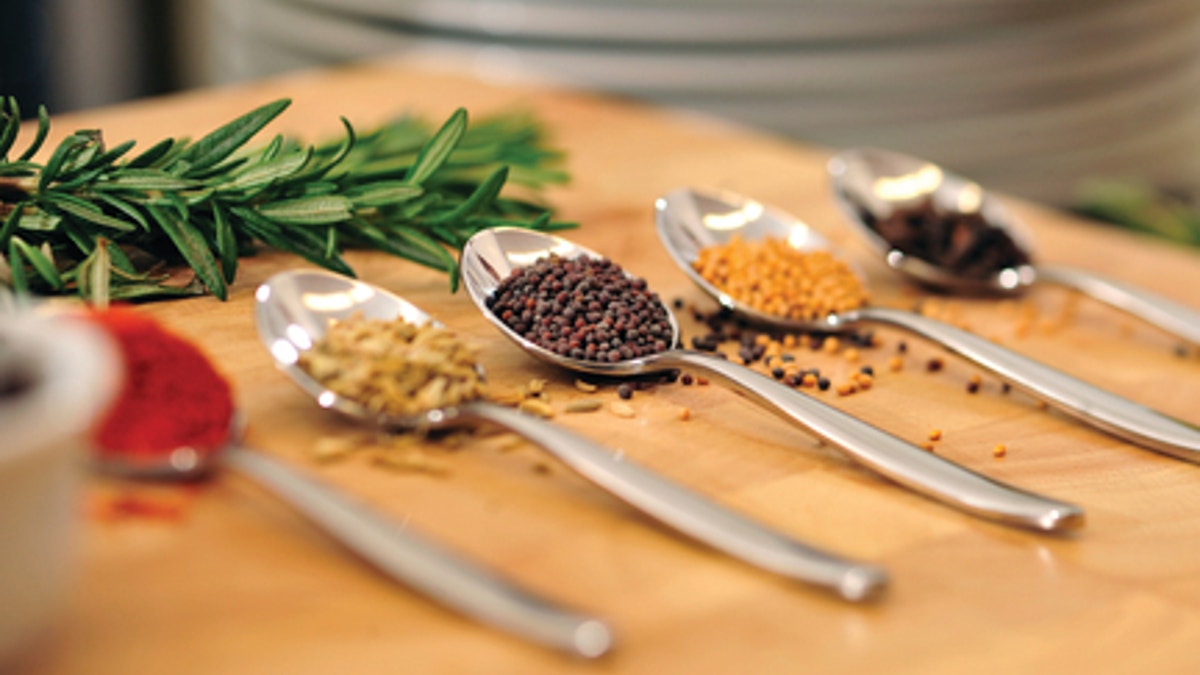
Salt: Americans eat too much of it.
According to the U.S. Centers for Disease Control and Prevention (CDC), 90 percent of Americans over the age of 2 eat too much sodium, putting them at risk for high blood pressure, heart attack and stroke. And lowering sodium intake can be a challenge – especially because so much of the American diet revolves around salty processed foods and restaurant meals.
But now, a new study claims that the addition of a few herbs and spices to most meals may help decrease the amount of salt people consume on a daily basis.
“At this time in our history, individuals have to take very dramatic and drastic action in order to accomplish [sodium] guidelines,” Cheryl Anderson, associate professor in the department of family and preventive medicine at the University of California San Diego, told FoxNews.com.
The U.S. Dietary Guidelines recommend a daily sodium intake of less than 2,300 milligrams (mg) per day for people over age 2. But people over the age of 51, African Americans, or anyone with high blood pressure, diabetes, or chronic disease – in other words, over half of the U.S. population – should strive for no more than 1,500 mg of sodium intake each day, according to the guidelines.
To lower sodium intake, individuals must often adhere to a strict diet comprised of fresh foods and home cooked meals. Because this poses a difficult challenge for most individuals, Anderson and her team set out to discover whether certain interventions could help.
The researchers enrolled 55 volunteers in their study, providing them with a full diet of low-sodium foods and drinks for four weeks. More than 60 percent of the study participants had high blood pressure, 18 percent had diabetes and all were overweight.
After four weeks, all of the individuals successfully reduced their sodium intake from an average of 3,450 mg/day to an average of 1,656 mg/day.
“We gave them the food [at first] but that’s not a sustainable model. People can’t go to a study distribution site and pick up what they eat every single day,” Anderson said. “So we said let’s take half of the study participants and really have them learn how to do what we did, using spices and herbs to flavor food.”
In phase two of the study, half of the study participants were given simple brochures instructing them how to eat a low sodium diet at home. The other half were enrolled in a 20-week behavioral intervention program with the goal of reducing their sodium intake to 1,500 mg a day – using spices and herbs to flavor food.
“We had a combo of individual sessions and group sessions and we allowed people to come in person or call in for their counseling sessions,” Anderson said. “…[We had] cooking demonstrations; each of [the participants] would come in and demonstrate for their group what they had done at home with a recipe to take out the salt. They’d cook it up and everyone would try it. It was an opportunity for most people to try something new that another group participant was having success with.”
The intervention group also received counseling on how to eat at restaurants with friends and how to get back on track after they experienced a dietary relapse.
Overall, both the intervention group and the brochure group experienced an increase in overall sodium intake in the second phase of the study, compared to the first phase of the study. However, the intervention group experienced less of an increase and consumed an average of 966 mg less sodium a day than the non-intervention group.
“The reason why this is so neat is that the intervention is clearly working, but [this also] shows that we need other things too,” Anderson said. “Spices and herbs are able to facilitate people getting to the recommendations ,and there are other things happening in the intervention that are also important. But because sodium is so common in our food supply, we need to think about strategies that will complement each other to help people get to recommended levels.”
Large-scale interventions, including increasing access to fresh foods and whole grains, will likely be necessary to help people achieve lower sodium levels nationwide, according to Anderson.
“We need to be mindful of food access issues and how they are playing out for some of our most vulnerable citizens...” Anderson said. “Spices and herbs are a wonderful message, because from an access perspective, people can grow herbs and spices relatively cheap; people could get to them relatively easily if they have a supermarket somewhere close by. But we need to be mindful of how the message of ‘eat more herbs and spices’ reaches everyone, not just those of us who have more access or means.”
The study’s results were presented at the American Heart Association's Epidemiology & Prevention/Nutrition, Physical Activity and Metabolism Scientific Sessions 2014.
